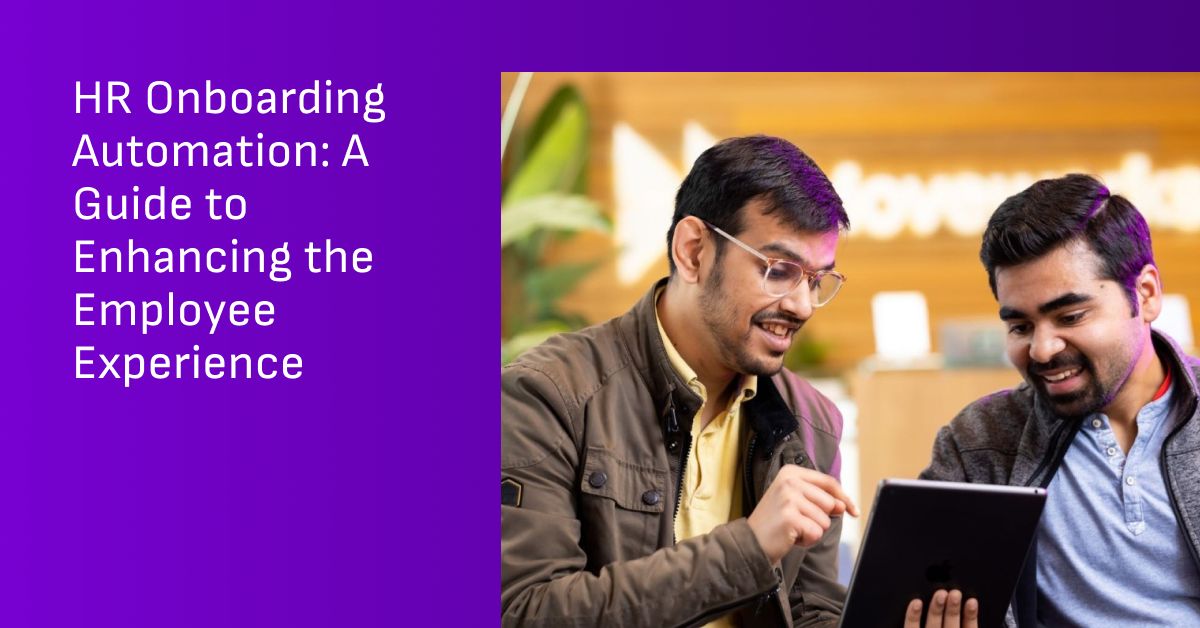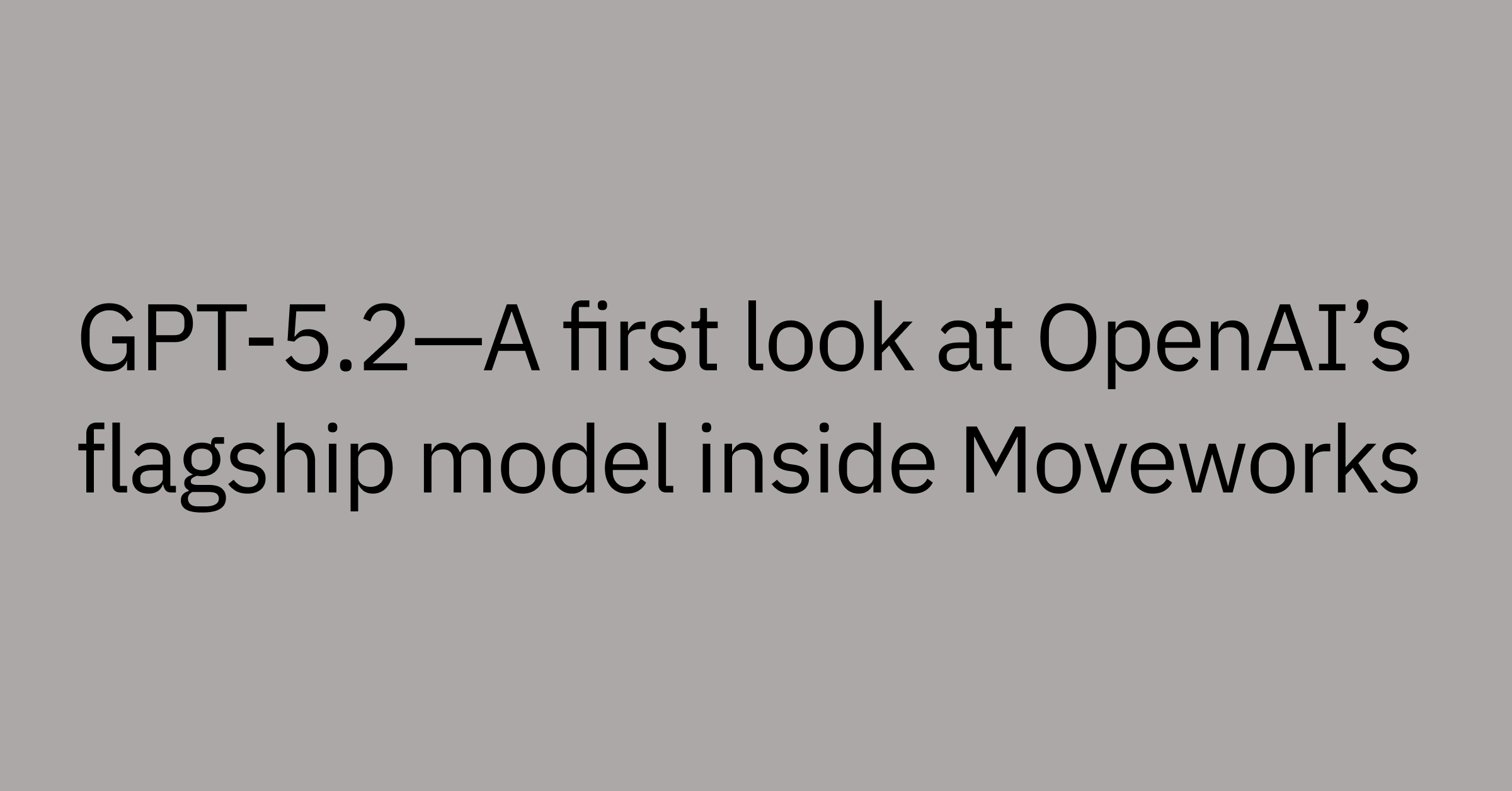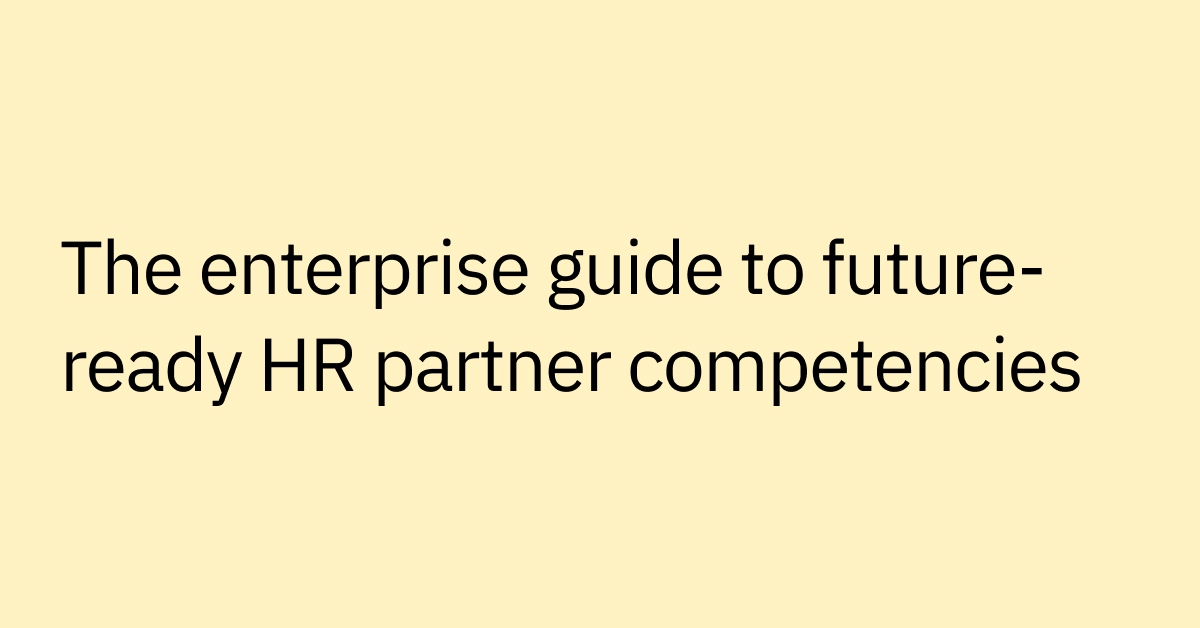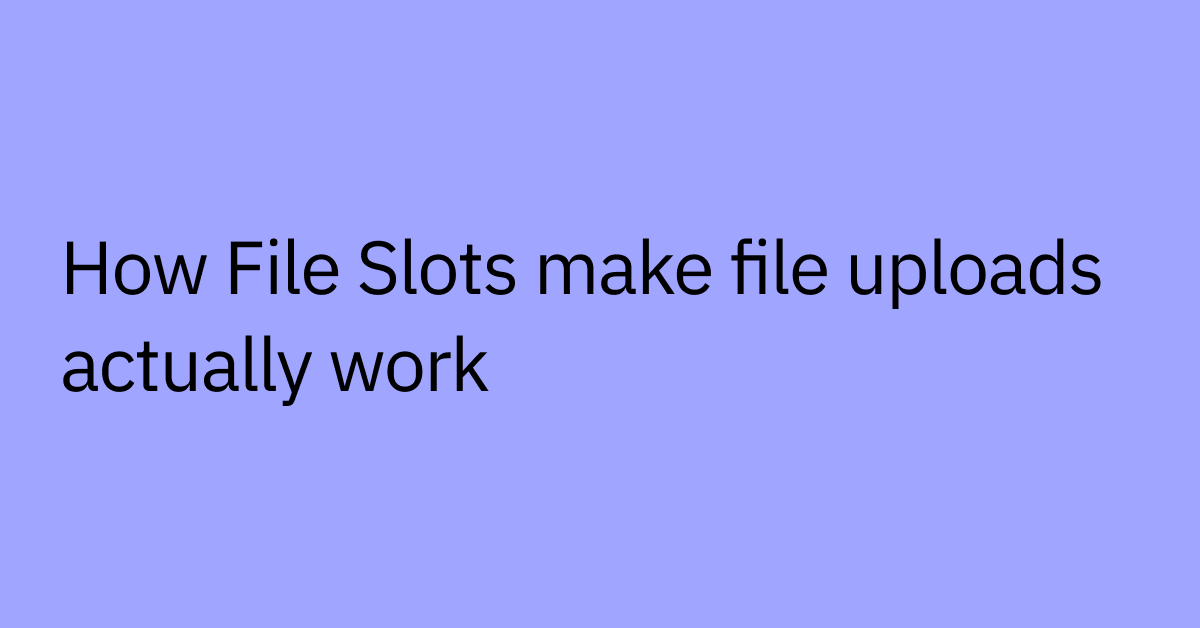Table of contents
Think back to your first day at a new job. Did everything go smoothly — or did things slip through the cracks?
Maybe you got the wrong login credentials. Maybe no one told you where to find the benefits portal. Or perhaps the whole thing felt impersonal and clunky — like you were just another box to check.
Now flip the script: Are your new hires having that same experience?
A messy employee onboarding process can leave a bad impression before someone’s even started. But when it’s thoughtful, personalized, and efficient? It sets the tone for long-term engagement and success. In fact, strong onboarding can even lead to higher retention rates — giving new hires more reason to stay and thrive.
That’s where onboarding automation can help. By using smart workflows and artificial intelligence (AI) to handle routine administrative work, you can save your human resources team time and give new employees a smoother start.
What is employee onboarding automation?
Employee onboarding automation uses AI and other technology to take repetitive tasks off HR’s plate and streamline standard workflows — helping new team members get up to speed faster.
Instead of relying on manual, paperwork-heavy processes, automated onboarding uses software to simplify everything from sending welcome materials to setting up user permissions. It’s become a must-have for modern businesses, especially as teams grow and scale.
An AI-driven onboarding process also helps you to reduce human error, improve consistency, and offer every new hire the same high-quality experience.
How automated onboarding works
When you automate onboarding, you’re often tapping into a mix of tools — learning management systems (LMS), task management platforms, communication apps — that work together to make the process faster, more seamless, and easier for everyone involved.
Here are some of the core onboarding tasks you can automate:
- Pre-boarding workflows, like sending offer letters and welcome emails
- Delivering onboarding checklists and getting-started guides
- Answering common questions like “Where’s the holiday calendar?” or “How do I enroll in benefits?”
- User provisioning to ensure access to devices, software, and systems
Automation gives your new hires fast, reliable access to the information and tools they need from your business, so they can get oriented and start contributing with less friction.
Want more ideas? Download The HR Leader’s Guide: How to Automate Employee Support With AI.
Replace manual onboarding tasks with automation
Onboarding can take anywhere from a few weeks to a few months, and it often lasts longer than it should. Automation speeds steps up and reminds employees of essential tasks – without sacrificing quality. Here are some of the most common tasks you can take off your team’s plate.
Provide 24/7 automated employee support
Conversational AI uses natural language to understand and respond to questions — just like a real human conversation. During onboarding, it can handle your common requests in real time.
That means new hires can ask about their benefits, choose their preferred laptop, or look up company policies without having to wait for an email or phone call from human resources – allowing your HR team to focus on more strategic work.
Enable accurate employee information
Let your employees update their own records through a self-service portal. With automated solutions, they can easily edit:
- Preferred names
- Addresses
- Additional contact information (email, phone, etc.)
- Emergency contacts
It keeps your records clean and saves your HR team from chasing down basic details.
Share onboarding materials
Onboarding often comes with a flood of documents, guides, and resources.
Automation helps keep resources organized by giving new employees access to a searchable knowledge base where they can revisit key information at any time — reducing the chance of overload.
You can also streamline learning and development (L&D) tasks by automatically notifying employees of pending training. If they have questions, they can quickly get the answers they need via self-service support.
Facilitate benefits enrollment
A virtual assistant can walk employees through benefits enrollment, help them compare plans, and answer important questions as they go. Built-in workflows also make it easy to send automatic alerts about deposits to their bank accounts or any changes to their benefits coverage.
Schedule trainings
Sync calendars, send invites, and automate reminders for upcoming training sessions, including what the training covers and why it matters. No time-consuming follow-ups or back-and-forth scheduling required.
Streamline provisioning
User provisioning is extremely important if you want your employees to hit the ground running — but it can slow things down if you’re doing it manually.
With automated provisioning, you can request the right devices for new employees, install the necessary software, set up user accounts, and grant access to the tools and systems needed — without a single phone call or email to IT.
Send reminders
From training deadlines to setting up direct deposit, automated reminders help new hires stay on track. Nothing gets overlooked, and your HR department doesn’t have to follow up manually.
5 benefits of automated onboarding
We’ve covered what automated onboarding looks like — now let’s talk about why it matters. Here are five significant benefits you’ll see when you make the switch.
1. Onboard new hires faster
Automation software speeds up the onboarding process, giving new employees everything they need to start contributing sooner. The quicker they can settle in and find their footing, the more confident and productive they’ll be, right from day one.
2. Lighten the HR workload
An automated onboarding program handles repetitive administrative tasks for your HR team, giving them more time to focus on high-impact initiatives — like improving company culture, creating personalized professional development plans, or managing compliance.
It also helps prevent overwhelm and burnout, which leads to better employee retention and a more stable team.
3. Reduce IT bottlenecks
AI-powered systems help your IT team save time too. Without it, new hires often face delays in getting the tools they need — while IT staff gets buried in requests.
With an AI assistant in place, you can streamline common tasks like user provisioning and system access management. Your team won’t get stuck in ticket queues, and new employees can start working right away.
4. Personalize and improve the employee onboarding experience
A thoughtful onboarding experience can make your new hires feel supported from the beginning.
Automation helps deliver the right information at the right time, creating a smoother, more personalized process that improves employee engagement and encourages long-term commitment to your company.
The alternative? Confused, disengaged employees, clunky workflows, and a poor first impression.
5. Keep onboarding secure
Automated platforms can help to keep employee data safe and secure. And when sensitive questions come up, AI is able to route them to the right specialist fast.
You can also control who sees what by enforcing permissions from your source systems. Plus, automation platforms are able to handle tasks like updating legal names, sending security training reminders, and tracking HR cases without missing a beat.
How to automate the onboarding process
Ready to implement a smart onboarding process?
Start by reviewing your current onboarding workflows. Look for inefficiencies, repetitive manual tasks, or steps that slow new employees down — these are great candidates for automation.
Next, choose a tool that fits your goals. The best HR automation platforms can handle everything from sending offer letters and assigning training to provisioning software and enrolling employees in benefits.
Once you’ve picked your platform, make sure your HR team and other key stakeholders, like hiring managers or IT, know how to use it. A little training and change management upfront can help save hours and headaches down the line. Most tools come with built-in training resources and support to help you get started and address employee questions.
Moveworks makes the onboarding transition seamless. The Moveworks AI Assistant is able to deliver value right out of the box — just connect your systems to quickly unlock automations that support streamlined onboarding and an improved new hire experience.
These automations help to enable a clear return on investment (ROI). Moveworks is able to provision software in seconds, obtain approvals when needed, and help reclaim unused licenses — enabling you to better save time, reduce costs, and make the most of your existing tools.
Some HR teams and help desks invest in self-service tools, like troubleshooting guides or request forms, only to end up still buried in tickets. Moveworks changes this by helping to surface the right resources at the right time to the right employees, so support can truly become self-service.
Bring automation to your offboarding process
Automation isn’t just useful for onboarding — it’s just as powerful during offboarding.
You can use automation to handle routine offboarding tasks like revoking system access, coordinating device returns, and notifying department heads, while enabling better security, compliance, and progress. It also helps ensure a seamless handoff of responsibilities to the right team members.
Choosing a platform that supports both onboarding and offboarding ensures you get the most value and makes for a more consistent employee experience from start to finish.
A tool like Moveworks allows you to:
- Simplify device returns and reduce friction in hardware lifecycle management
- Help remaining coworkers locate files and documents from a departing employee’s library
- File IT tickets to transfer ownership and prevent critical information from getting lost
- Respond to employee questions throughout the offboarding process
Streamline onboarding and improve the employee experience
Automating your onboarding process doesn’t just save time — it can also improve consistency, reduce errors, and help new hires feel supported from day one. When you remove these repetitive manual tasks, your HR team gets to focus on what really matters: creating a better employee experience.
Moveworks helps make that possible. As a leading HR automation solution, Moveworks supports your team from onboarding through different stages of the employee lifecycle — including benefits administration, performance management, and ongoing support through a self-service knowledge base.
With fewer manual tasks slowing things down, your people stay productive and engaged from the start.
Ready to help your new hires start strong? Book a personalized demo today.



